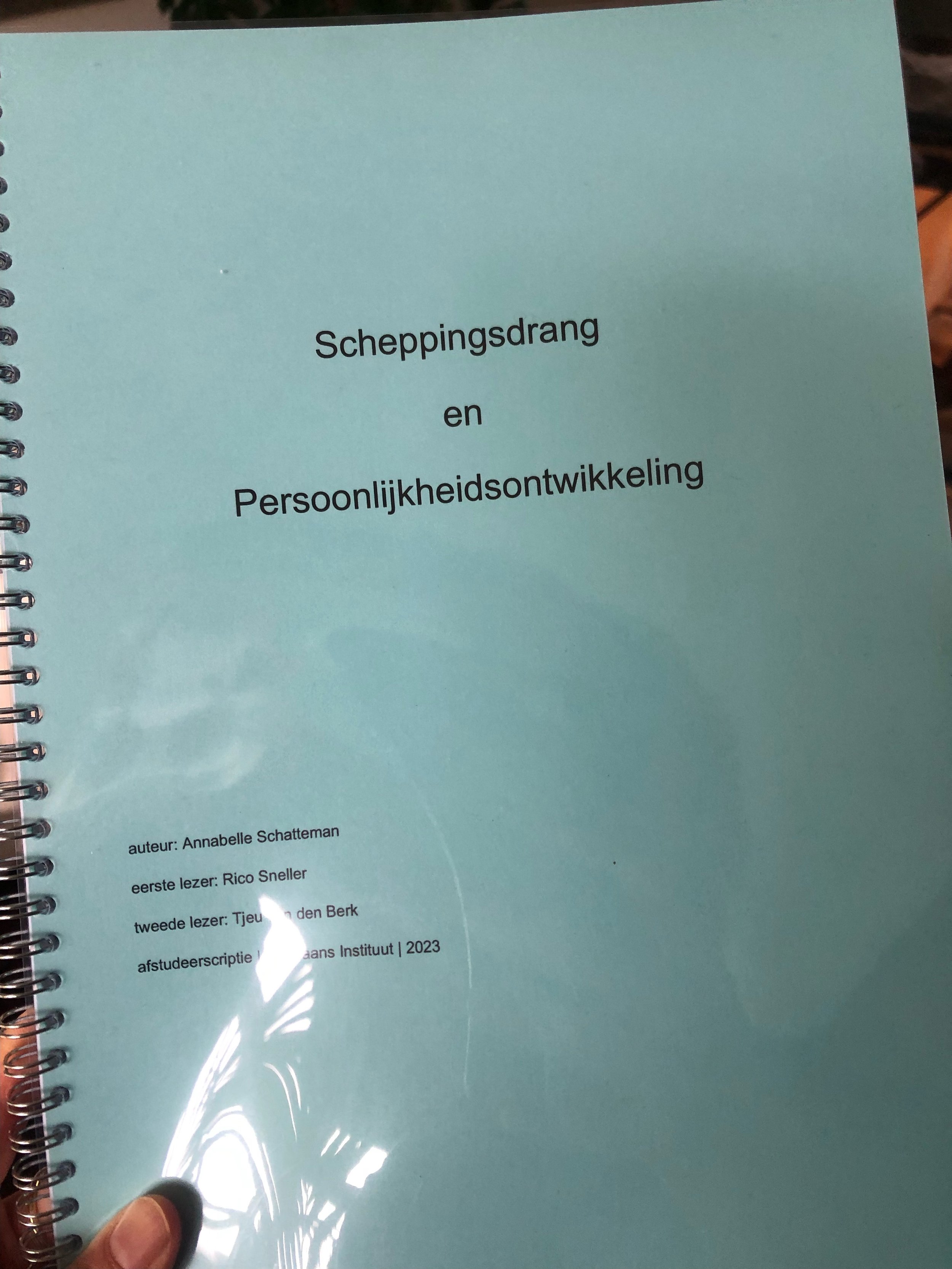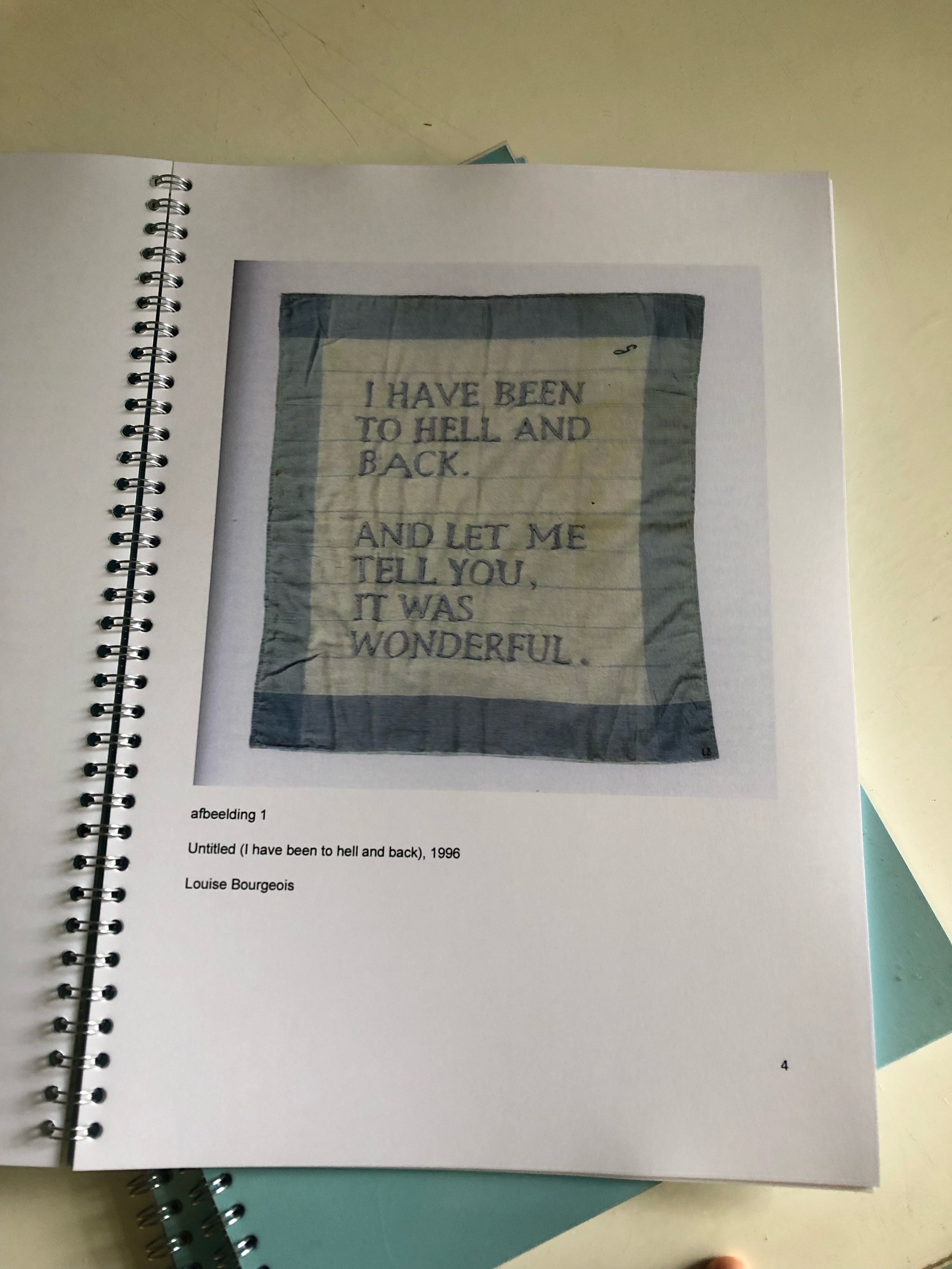This is the title of my graduation thesis to become a Jungian analytic therapist.
A sneak peak into its content:
A study about the question whether artistic creativity favours or impedes personality development, based on Otto Ranks statement from his book Art and Artist: Creative Urge and Personality Development with Louise Bourgeois as case study.
‘’Artistic creativity does not favour the personality, but, up to a certain point, impedes it, since it forces on the artist a professional ideology, which more and more penetrates the human self and finally absorbs it.’’ Otto Rank
What did he mean by that ?
In very short….
The modern artist is a romantic who makes art based on the old collective art ideologies. Primitive and classical art were based on collective ideologies of eternity of the soul and the ideal beauty respectively. The modern art ideology is based on the psychological ideology of the artist. He no longer believes in the immortality of the soul or the ideal beauty but he wants to tell his own truth. Rank stands with both feet in the romantic tradition. For him, an artist is someone who, from an urge to create out of fear of life, is in conflict with the prevailing ideology. He sacrifices his life to live out his individual art ideology in his creations but by doing so runs the risk of losing himself. The neurotic artist may turn to psychotherapy to deal with this conflict because he wants to understand himself. Rank had predicted in his first book The Artist in 1905 that too much self-consciousness would hinder creativity and that the resulting void would be filled by a psychotherapist. 25 years later, when he wrote Art and Artist: Creative Urge and Personality Development in 1930 (he had analysed many artists himself), he came to the conclusion that this was still true. According to him, art in 1930 was in a limbo between its old collective religious or social function and its new function as a developer of personality. Psychotherapy was on the rise and the quality of the art, the pure creativity, had to suffer. The modern artist is held back from his pure creativity by psychology. He comes into conflict with himself because his impulse is held back by the fear of going to the fullest or because he completely identifies with his ideology and becomes engulfed and enters a neurotic state. Psychoanalysis or psychotherapy won't help him, Rank says, because they'll steer or normalize him toward false artistry. The artist must first work on himself (with or without the help of therapy) in order to get out of the neurosis and only then can he choose whether to continue a life with or without art.
where does Louise Bourgeois come in?
I find Rank’s quote about the artistic creativity impeding personality development very intriguing, especially in combination with the French-American artist Louise Bourgeois because she spent 34 years in psychoanalysis and eventually said: ''Freud did nothing for the artists or for the artist's problem. That's why artists repeat themselves, because they have no access to a cure.'' Bourgeois is one of the leading female artists of the 20th century. Her drawings, sculptures and installations, which she has made in her seven-decade career, are memories and processing of events from her childhood. For me, Louise Bourgeois is a pivotal figure in the history of modern art in terms of the union of psychology and art. I regard her art as a beacon for that turning point of which Otto Rank speaks, that new age that dawned in his time, but had not yet arrived. Much has been written about Louise Bourgeois, but she has mainly been studied from a Freudian perspective. The result of most research is that she has freed herself from Freud's patriarchal psychoanalytic system by carrying her feminist art through her psychoanalysis and has introduced the female Oedipus complex into art. In the book Fantastic Reality, the art historian Mignon Nixon writes about Louise Bourgeois: ‘‘Like psychoanalysis, the history of modern art needs a theory of the maternal subject, and Bourgeois' sculpture plays a pivotal role in constructing it. '' In this thesis I will investigate how I can illuminate her inner conflicts, her art and the psychoanalysis from which her art originated from a Rankian perspective
She eventually said that Freud can do nothing for the artist,. But what exactly was the benefit of the analysis, otherwise she wouldn't have gone through with it?
And what can the therapist, according to Rank, do for the conflicted artist?
All this and more can be found in my thesis.
for more information on the content or if you are interested in reading the thesis, feel free to contact me via email: annabelleschatteman@gmail.com
Oh yes, forgot to mention it: it is so far only in Dutch…working on it to translate it.

